By Nina Whittaker with Deanna Ramsey, Olinka Gjigaš and Dr. Natalie Senjov-Makohon.
Most people think of rare books cataloguers as solitary creatures that spend their days peering over the dusty pages of history. In reality, however, it often takes a village to catalogue a rare book. As a rare books cataloguer, my days are filled with exciting conversations with people from across Australia, and across the world. The knowledge holders I work with are experts from all walks of life – linguists, historians, librarians… and in this case, a Croatian tourism bureau and Greek-Catholic Bishop.
When a rare book appears on my desk, I begin by asking it a number of questions.
What language are you written in?
Where and why were you published?
Who did you belong to?
Often I find bookplates, inscriptions, marginalia, and other supporting material that helps me to untangle the story of a book. For some books, their stories have already been written. Other books, however, make it through to 2022 without any written record.
This particular book came to my desk in a box labelled “Ukrainian Prayer Book – Australian Manuscripts”. Inside was a small pocket-sized book bound in dark brown cloth. It was written in what I assumed to be Cyrillic, although there were some letters that seemed unusual. It was labelled as a Ukrainian prayer book, but was printed in Zagreb (Croatia) in 1917. Didn’t Croatia use a Latin alphabet? Why was this particular book printed in Cyrillic? And what was its connection to Ukraine? There was work to be done.
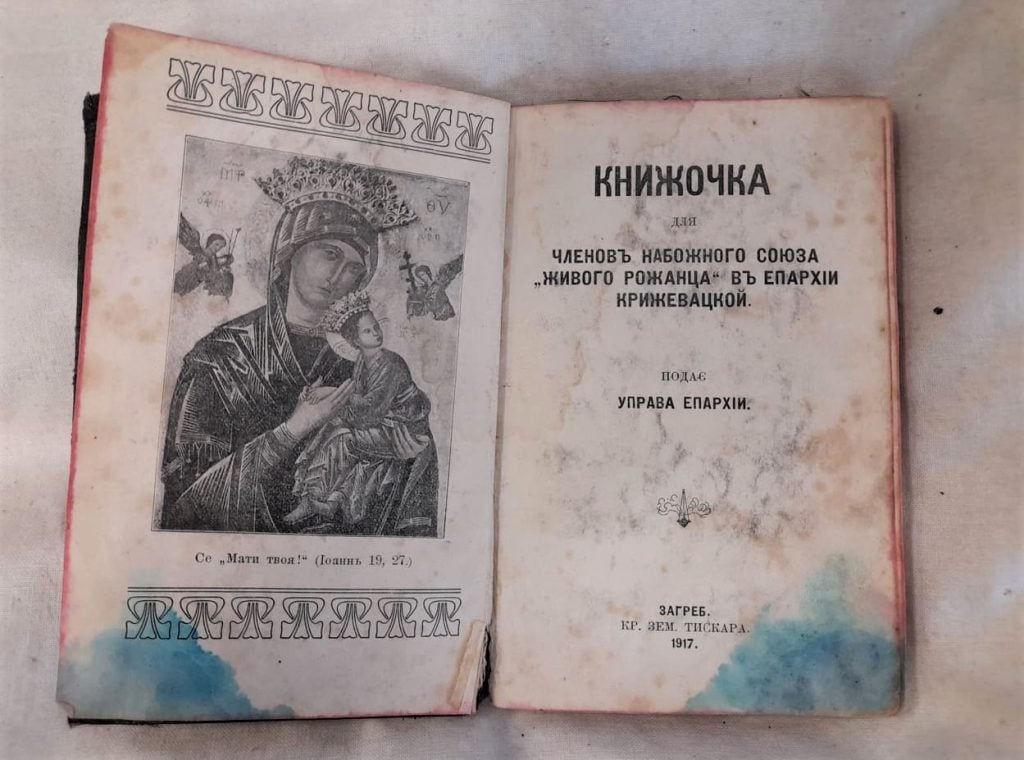
What language are you written in?
I first got in touch with Deanna Ramsey, the Ada Booth Bequest Librarian and Slavic resources expert at Monash University. She was able to provide our first key insight – the language of the book was not contemporary Croatian or Ukrainian, but Old Church Slavonic. I asked Deanna to tell us a bit more about what that means.
‘Old Church Slavonic emerged in the 9th century, and is attributed to Saints Cyril and Methodius, Byzantine missionaries who translated liturgical books and gospels to spread Christianity to Slavs. The brothers created the Glagolitic alphabet, based on Greek characters that incorporated the vernacular of Slavs at the time. This is said to have evolved into the Cyrillic alphabet that is used today.‘
‘As Christianity spread eastwards, and with it Old Church Slavonic, the alphabet adapted and evolved to accommodate local dialects and regional variations, and individual Slavic languages emerged. These are used today in eastern Europe, parts of central Europe and much of the Balkans. These Slavic variations encapsulate the complexities and diversities of those countries and their nationhood, influenced by a long history of changing rulers, kingdoms and empires. The linguistic remnants of historical struggles can be seen today, including in the transliteration of Cyrillic into Latin script.‘
‘A timely example of this is the spelling of Ukraine’s capital, Kyiv. To many, the spelling of ‘Kiev’ represents the Russification of Ukraine, with its emergence in the 19th century as part of the Russian empire. Later, the use of the Russian spelling was part of the USSR’s language policy which aimed to override and standardise national identities, cultures and languages.’
Although the English spelling ‘Kyiv’ was officially adopted by the Ukrainian government in 1995, global media continued to use the spelling ‘Kiev’, leading the Ukrainian Ministry of Foreign Affairs to launch a #KyivnotKiev campaign in 2018. In this context, the spelling “Kyiv” signifies Ukraine’s assertion of its independence, identity and sovereignty.
‘Language has always represented more than just a way to communicate. If you dig deep enough, you will find stories of conquest, displacement, dissent and determination. As librarians and cataloguers, we have to be aware of the power that words hold, and do our best to represent these complexities and histories of the books that come into our hands.‘
With Deanna’s expertise, the first piece of the puzzle had been solved. We finally had a transcription of our title in the three languages we needed it in – the original Slavonic, the ALA/LC Romanisation, and the English translation.
- Книжочка для членовъ набожного союза „живого рожанца“ въ епархіи крижевацкой.
- Knizhochka dli͡a chlenovʺ nabozhnogo soi͡uza „zhivogo rozhant͡saʺ vʺ eparkhīi krizhevat͡skoĭ. podaė uprava eprkhīi.
- Booklet for members of the devout union “Living Rosary” in the diocese of Kryzhevets
Where and why were you published?
Deanna also provided me with a vital clue for the next part of my fact-finding mission: Kryzhevets, in the English translation, referred to the Croatian city of Križevci.
Križevci is a city of 20,000 people, located in central Croatia. While this ‘Town of Eight Church Towers’ boasts city tours, cycling trails and wine routes, I doubt they were expecting to hear from a librarian in Victoria, with questions about a book from 1917.
Olinka Gjigaš, director of the Tourist Board Visit Križevci, arrived at work one February morning to find a message from Melbourne, asking for any information the town might hold about the book and its history. And Olinka knew exactly who to ask.
One of its many historical buildings is the Cathedral of the Holy Trinity, a historic Greek Catholic church that is the centre the Eparchy of Križevci. With an impressive historic library of its own, the congregation still sings its hymns in Old Church Slavonic. Bishop Milan Stipić was more than happy to help. With their expertise, we were able to confirm that this book was likely written for a lay movement within the Catholic church called Živa krunica.
We were also able to determine the connection between this town and Ukraine. In October 2021 Križevci marked the 120th anniversary of the arrival of Ukrainian Greek Catholics in Croatia. Many Greek Catholic Ukrainians moved to Croatia in the early 1900s when both countries were part of Austria-Hungary. They went to Križevci as a centre for Greek Catholicism, and thus Križevci retains a strong connection to Ukraine today. Recently, the Greek Catholic Eparchy of Križevci joined with many others from around the world to express solidarity with Ukraine following the Russian invasion.
After helping us discover the story of this publication, Olinka reflected: “Although it is my job, it is always with pleasure to help people discover our lovely town, either when visiting, or solving problems like yours. Križevci holds a lot of historical secrets, and is great to be able to… [take] a nice word about it around the world.”
Who did you belong to?
From the hands that carefully bind a book to the little fingers that smudge its pages, each owner contributes to a rare book’s story. With donor Dr. Natalie Senjov-Makohon’s help, we uncovered a rich history of Ukrainian-Australians within the pages of this book.
Purchased just after World War I by Dmytro and Anastasia Burlak, this prayer book was used to teach their nine children Cyrillic during the cold winter months in Bosnia. Together they memorized prayers, sang liturgical hymns, and were taught services in Old Church Slavonic.
Katerina Senjov (née Burlak), one of the nine Burlak children, remembered how her brother was conscripted into the Yugoslav People’s Army in 1945, following World War II. Dmytro and Anastasia gave their son this book for his safekeeping during his service. When Ivan came home, it was returned to the family.
In 1952, Katerina and her husband Peter Senjov left Yugoslavia as refugees. The prayer book went with them. The young couple stayed at a Displaced Persons camp in Trieste, Italy, before finally leaving from Genoa in 1953 to start their new life in Australia. Australia had opened its doors to further immigration from Europe just a few years earlier, in 1947.
Katerina and Peter Senjov joined the Ukrainian Geelong community. Like her parents before her, Katerina used the prayer book to teach her children Old Church Slavonic, and once more their family gathered around its pages to learn prayers and hymns. The book was used by Katerina until 1966. After the Catholic Church’s Vatican II Council, like other Ukrainian Eparchies, the Australian Eparchy adopted the Ukrainian language for its services and Katerina relearnt her prayers, sang liturgical hymns, and attended services in Ukrainian.

The Ukrainian community in Melbourne today
Exactly 50 years later, Dr. Natalie Senjov-Makohon was awarded the 2016 State Library Victoria – Ukrainian Studies Foundation Australia Fellowship. The Fellowship supported the recording and preservation of the stories of the first Ukrainian Geelong emigrants, including her parents Katerina and Peter. Her book Two Twigs was officially launched at the State Library of Victoria in 2018. When the manuscripts for the book were donated to the library in 2019, the prayer book came too.
The Ukrainian-Australian community today is working to document and preserve its cultural heritage, while maintaining a strong connection to relatives who remain in Ukraine. Throughout the years they have organised events, functions and fundraisers to support their fellow Ukrainians, sending aid and relief in response to Chernobyl, the Maidan Revolution, and today the Russo-Ukrainian War.
Dr. Senjov-Makohon reflects,
“Again, Ukrainians have been resilient and determined to uphold their culture, dignity and identity. The latest catastrophe in Ukraine shows the resilience and determination of Ukrainians. In Australia, Australians of Ukrainian origin have been an asset to Australia and they are hard working. Simultaneously, they have not forgotten their cultural heritage, and this is evident through the various organised events throughout Australia, and locally in Melbourne.
In Closing
State Library Victoria has a dedicated team that works with its published collections to uncover and share stories like this one. Each day, we see how the smallest books can tell the biggest stories. In bringing together people from across the globe to create a single catalogue record, we are once again reminded how books have the power to connect people across time, distance, and generations.
This post was written by Nina Whittaker, Librarian from Collections Development & Description.
To view SLV’s record for the book, visit our catalogue.
To learn more about the Burlak Family, see “’Burlak Family – Waves of Diaspora Communities‘ and Katerina’s memorial site.
To learn more about Ukrainian Geelong emigrants, visit the Two Twigs website. Two Twigs is available at the Readings Bookstore at the State Library of Victoria, and online in both English and Ukrainian at diasporiana.org.ua.
References
Association of Ukrainians in Victoria. (2022). Homepage. https://auv.org.au/
Australian Federation of Ukrainian Organisations. (2022). Homepage. https://www.ozeukes.com/
International Encyclopedia of Ukraine. (1984). Cyrillic alphabet. http://www.encyclopediaofukraine.com/display.asp?linkpath=pages%5CC%5CY%5CCyrillicalphabet.htm
International Encyclopedia of Ukraine. (2001). Saint Cyril. http://www.encyclopediaofukraine.com/display.asp?linkpath=pages%5CS%5CA%5CSaintCyril.htm
Ministry of Foreign Affairs of Ukraine. (2019). #CorrectUA. https://mfa.gov.ua/en/correctua
Total Croatia News. (2021, October 10). 120th Anniversary of Ukrainian Greek Catholics’ Arrival in Croatia Marked. https://www.total-croatia-news.com/news/56784-120th-anniversary-of-ukrainian-greek-catholics-arrival-in-croatia-marked
Total Croatia News. (2022, February 26). Greek Catholic Eparchy of Krizevci expresses solidarity with Ukraine. https://www.total-croatia-news.com/news/60629-greek-catholic-eparchy-of-krizevci-expresses-solidarity-with-ukraine
Senjov-Makohon, N. (2017). Two Twigs: The Unique Ukrainian Australian Emigrants in Geelong, Victoria, 1948-1960s. Ukrainian Studies Foundation in Australia and the State Library of Victoria.
Senjov-Makohon, N. (2018). Burlak Family: Waves of Diaspora Communities. In Cariddi L., What Happened At The Pier: Recalling The Journey II. Multicultural Arts Victoria.
Senjov-Makohon, N. (2021). Katerina Senjov (Burlak), 1928-2021. https://nsenjov.wixsite.com/katerina-senjov
State Library Victoria. (2016). Dr Natalie Senjov-Makohon. https://www.slv.vic.gov.au/about-us/fellowships/ukrainian-studies-foundation-australia-fellowship/previous-fellows/2016
State Library Victoria. (2022). Knizhochka. https://bit.ly/3L1Zn3R.
Senjov-Makohon, N. (2018). Digital Cultural Heritage “Two Twigs” at State Library Victoria. https://youtu.be/7j409BeyZ08
Senjov-Makohon, N. (2018). Two Twigs launch at the State Library Victoria. https://youtu.be/hZMq7OQX24I

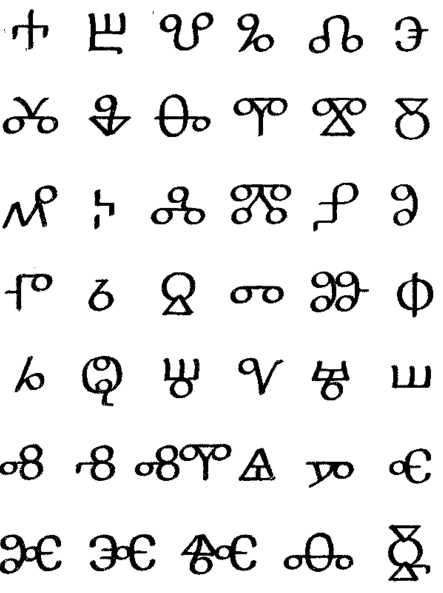

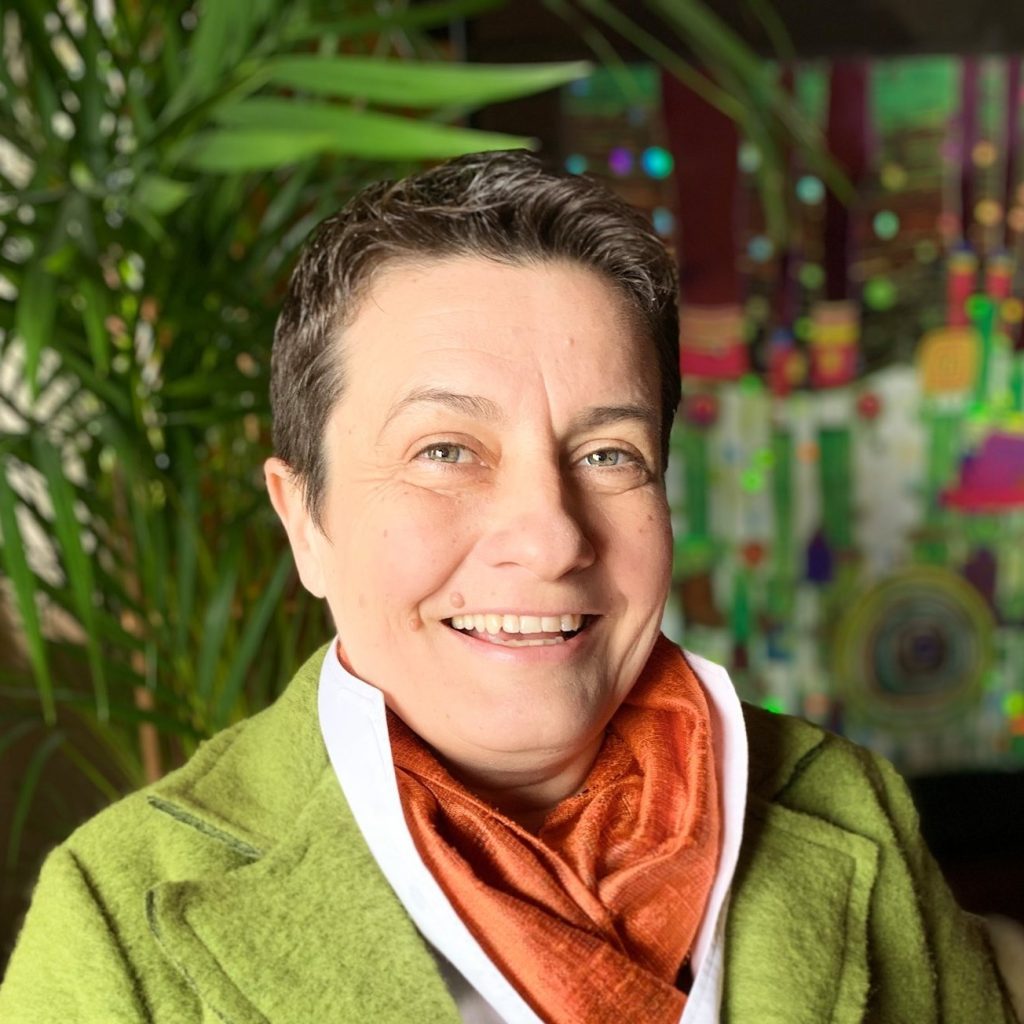
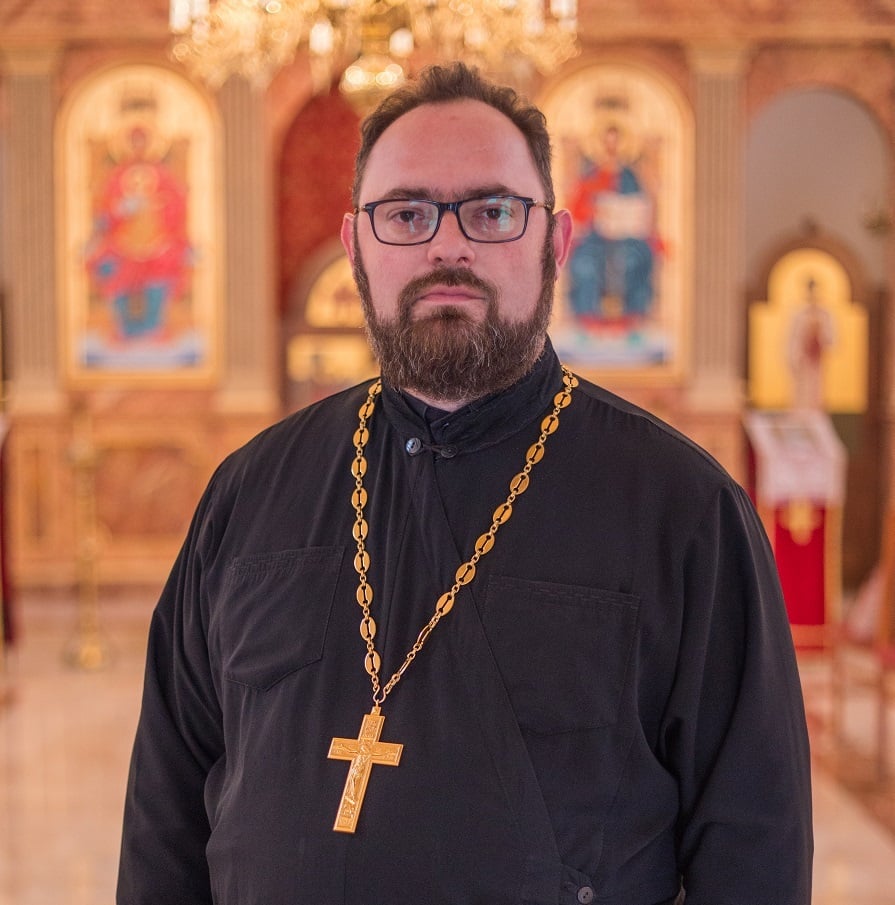
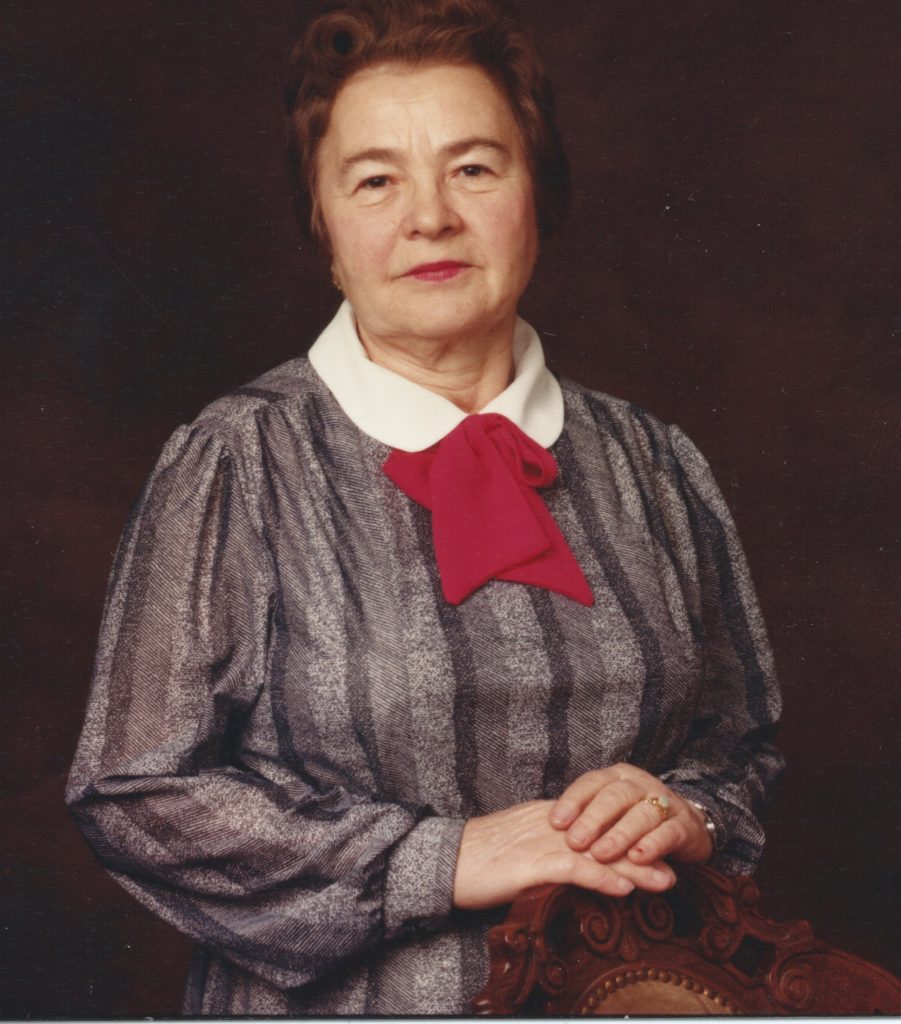
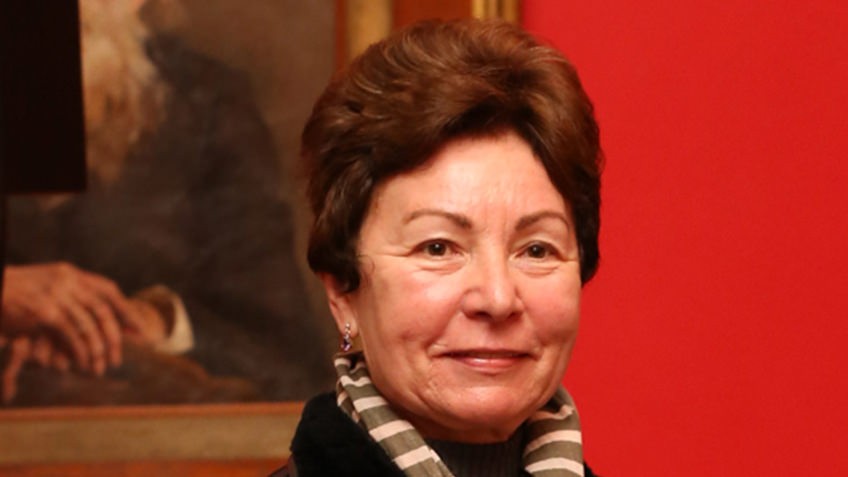

An excellent and rewarding piece of research Nina. Well done and thank you for publishing your findings.
A fascinating story, thank you for sharing this research, I’ve learnt a little of the Ukrainian story, at this time so very poignant.
Thank you for this story. I, like many others have been amazed at the determination of the Ukrainian people in the present assault by the Russian 21st Century colonizers. My prayer is that they prevail even though it is at great cost, both human and material, but such is the way when opposing tyrants. The rest of the world stands with the brave ones.
A great example of the stories that books contain, apart from those in their texts. Thanks for pursuing it and publishing!